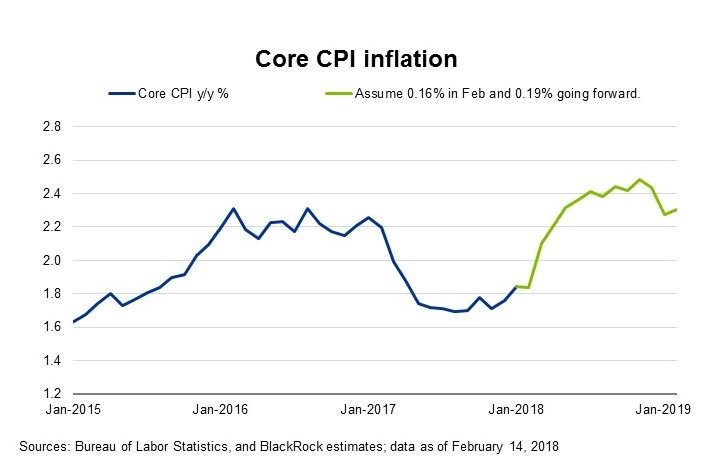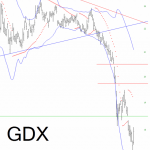Investors are trying to get a reading on where inflation will go in the next 12 months because it’s a key variable for forecasting asset prices and the Fed funds rate. As you can see from the chart below, the year over year core CPI will hit near 2.5% in late 2018 if the month over month increase is 0.16% in February and 0.19% going forward.

Core CPI Base Effects
This chart shows the base effects the core CPI will face and is a great argument why the Fed should look at a long-term average of inflation before setting policy. For example, if inflation was flat one year, and then up 3% in the next year, the Fed shouldn’t be aggressively hawkish because of a 1.5% average. Therefore, the Fed probably won’t overreact to the future accelerated inflation, just like how it ignored the low inflation in 2017 as it defiantly raised rates saying the trend was transitory.
Misnomer About The Relationship Between The Bond Market And Inflation
The common mainstream narrative is that bond yields increase when inflation picks up. The correction in February was blamed on the average hourly earnings report causing inflation expectations to spike which caused interest rates to increase, which then caused stocks to fall. While it makes sense that bond yields would increase because of inflation to make up for the decline in purchasing power, this hasn’t borne out in the past. The historical data shows bond yields are more likely to reflect past inflation than future inflation. This ruins the narrative that yields react to inflation estimates; the market is supposed to price in future changes, but it hasn’t. The 10-year treasury yield has a 70% correlation with the prior 10 years of inflation. On the other hand, the 10-year treasury yield only has a 28% correlation to the next 10 years of inflation. This analysis was done by Robert Shiller, going back to 1913.
Recent Action Shows Treasuries Are Oversold
We discussed the historical data on how interest rates and inflation are related. We aren’t denying the obvious which is that the 10-year bond yield has been in a major sell-off in the past few months. The media narrative can be correct in the short term while ignoring long-term trends. It’s easy for the media to set a headline which makes sense for the day’s action because it simply looks at the action and extrapolates causation which may or may not exist. If the recent action changes, then the media simply changes the headlines with zero regard for what it just said. For example, there are headlines which show stocks have risen and sold off based on heightened inflation. Make sure to properly vet the narrative or else you will go insane trying to understand why X causes Y one day and causes X causes (-Y) another day. There’s nothing wrong with looking at the near-term action, just make sure to avoid confusing correlation with causation.














Leave A Comment